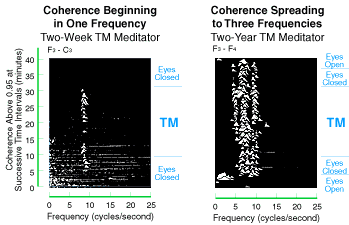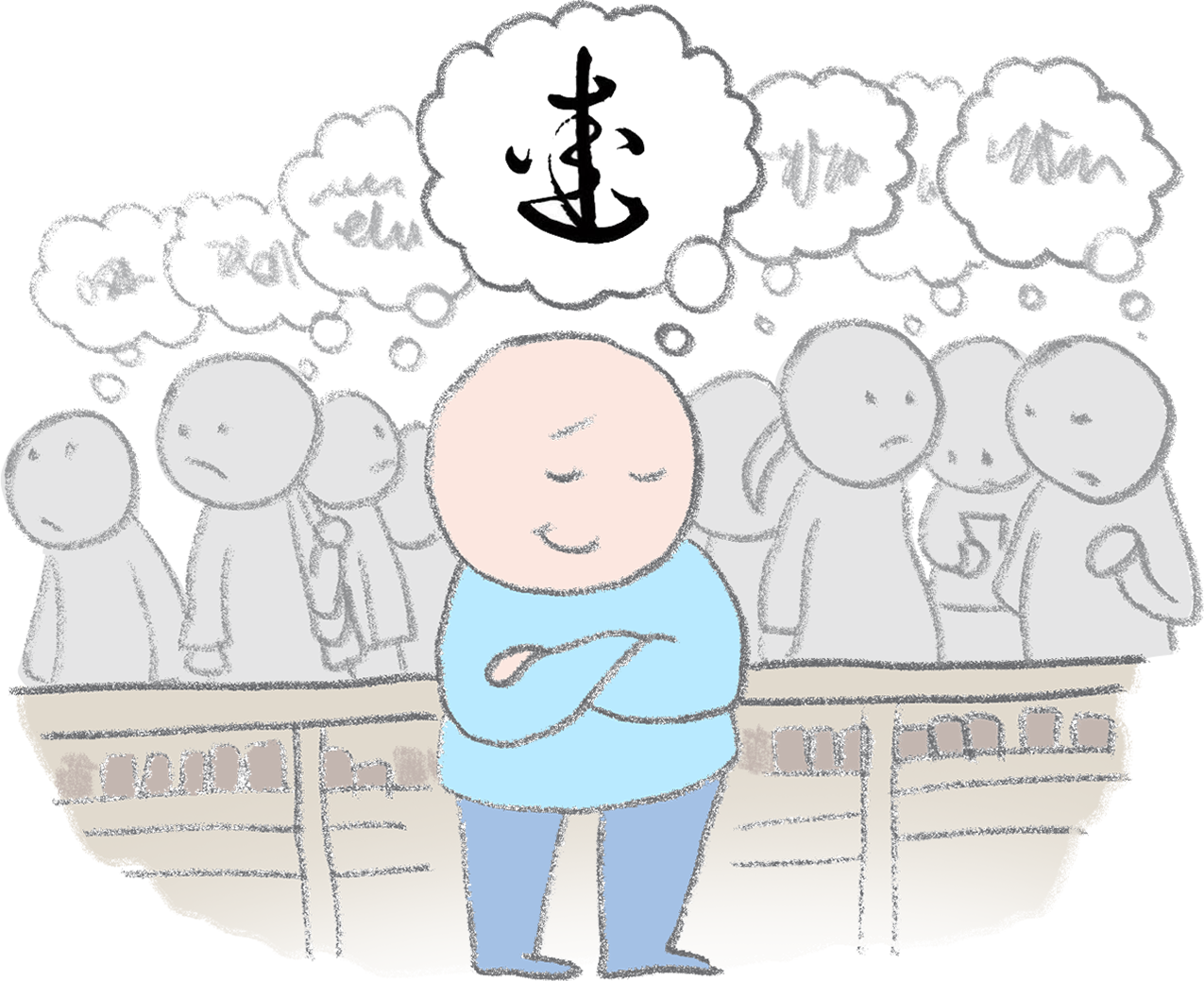A Decade of Zen: 10 Unexpected Lessons from Daily Meditation
They say sitting is the new smoking. Unless you're meditating.
November 9th marked a full decade of me sitting quietly in a chair. Hold your applause.
Not a decade, continuously. Just for 20 minute chunks. Every day. *Okay, most days, at best. The practice changed my life in more ways than I’d anticipated: Some good, some less good. And yes, you ‘really should get around to learning how to do it.’
Year 0:
November 9, 2013
Reservoir, Victoria
A small, bearded man in flowing white robes is giggling. In a voice with an uncanny resemblance to Yoda1, he slowly utters "Whatever we put our attention on…will grow stronger… In our life.”
I’m watching his blurry image on a small television. The VHS tape from the Cretaceous era has warped the sound from the tape being played thousands of times, but I get the gist: The mind is a deep chasm that can be explored, and folding your attention inward will reward you with surprises.
It turns out I was watching someone named Maharishi Mahesh Yogi. I notice a photo on the wall with him, surrounded by some noisy young boys called The Beatles. The photo sits on the classroom wall next to a crayon drawing done by a small child. The drawing is of a dog (I think) sitting on some mud, smiling. (I don’t know what it means, but it is seared into my memory to this day.)
This classroom is in the back of The Maharishi School; a special education space in Reservoir, Victoria. Sophie and I took the 40-minute train here from our place in Melbourne. It looks like any other school, except every doorway is strewn with shoes and socks of various colours. Everyone is barefoot in this place, and it is very quiet.
When we decided to finally ‘get around to learning how to meditate’, we thought it would be a simple thing to do. It was not. The intention was to get some instruction from actual humans instead of a YouTube video or an app, and it turns out there aren’t that many humans around Melbourne who teach this stuff. (Note: Since 2013 many have popped up.)
As it happens, the type of meditation practice the Maharishi teaches is called Transcendental Meditation and I am assured “it is not really religious.” (it is) and that “there is a lot of science behind it.” (There is some.)
I suspended my skepticism long enough to learn more. Red flags go up every time I hear of something with a culty or organized religious aspect to it.
Sophie and I were each given a secret Sanskrit mantra to repeat quietly in our heads, told about the ways to practice meditation, and sent on our way, after paying a man with several missing teeth some money. We returned to the school a few more times for check-in sessions, but after the third time, we pretty much got the idea. We never returned to that school on Dundee Street.
— Before you ask, no, not all streets in Australia are named after famous crocodile-hunting celebrities. (Just most of them.)
Year 1:
July 4, 2014
Honolulu, HI
Tonight I sat bolt upright at 4am having just had a nightmare about that smiling dog sitting in mud. Don’t ask me why. Could be jetlag, could be the airline food from yesterday, but I definitely meditated right before I went to sleep, which they told me not to do.
Something they don’t tell you when you start meditating is that there is a kind of ‘mental purge’ period that really knocks you around for months: Old memories you thought were long buried, new ones that you didn’t know you had, and scary ones that wake you up in the middle of the night. They all bubble up in your brain while the practice empties your brain-colon.
If there is a lesson here: Only meditate in the morning, and/or in the early afternoon. Treat it like coffee. Don’t do it right before bed.
I sit awake and listen to a radio interview from June, where Jerry Seinfeld talks to Alec Baldwin about his meditation practice. Seinfeld started doing it in college in 1972 and has been doing it every day since. He said:
“I found it in ’72. It has this great energy and focus, and I’ve been doing it for the rest of my life. This is a nice energy. Here’s how I describe it; You know how three times a year you wake up and go ‘Boy that was a really good sleep’? Imagine feeling like that every day. That’s what it is.”
— Jerry Seinfeld
The irony was not lost on me.
Year 2:
November 9, 2015
Inwood, NY
I’m so busy trying to settle in to New York I haven’t found time to lock in a daily practice. The only time I can carve out is the 20-minute block of time between 125th street and Columbus Circle on the A-train where I can put my wallet in my front pocket and close my eyes. I have definitely come out of these meditations drooling more than twice. (I fit right in with the rest of the subway creatures.)
I noticed I can’t meditate in an Uber.
Year 3:
November 16, 2016
East Village, NY
I am reading more about “Greater Orderliness of Brain Functioning” using EEG coherence as a quantitative index.2
They tell me “EEG coherence increases between and within the cerebral hemispheres during Transcendental Meditation. This is a quantitative index of the degree of long-range spatial ordering of the brain waves.”
The chart on the left shows that for a 2-week meditator, EEG coherence increased during the period of meditation. The chart on the right, of a 2-year meditator, shows high levels of coherence even before meditation began, spreading of coherence to high and lower frequencies about half way through the meditation period, and continuing high coherence even into the eyes-opened period after meditation.
This is all very science.
I’m still uncomfortable with the ‘religious’ part of the practice and keep feeling around for something more scientific. The above studies are good, but I need more.
And I still can’t meditate in an Uber.
Year 4:
November 9, 2017
Woodstock, NY
I finally read Sam Harris’ book from 2014, “Waking Up: A Guide to Spirituality Without Religion.” It had been sitting on my shelf for two years, unopened and hidden by a drawing. Then, one day the drawing fell off and I picked it off the shelf.
I couldn’t put it down.
I read the whole thing in two sittings. It’s like someone hacked into my brain, rustled around in my thoughts and came up with the perfect book to answer every question I had about the human mind. Bonkers.
I’d stumbled upon his work on atheism back in 2011, through Christopher Hitchens (as I know many others have.) The way Sam writes about meditation is based more in the clarity of neuroscience— the utility of something so simple to do, but at the same time remarkably complicated to learn.
The book was very much my Sword of Gryffindor: appearing out of the ether just as I needed it most. From here, my knowledge curve on meditation takes a massive upward spike, and never comes back down. Diving in to Waking Up was like finding the key to a locked door I’d been kicking at for years.
I finally relinquish my attachment to the practice of Transcendental Meditation— something I’d been on the precipice of doing for months, without any other practice to jump to.
This part of an essay of Sam’s struck me like a baseball bat:
Even an organization like Transcendental Meditation (TM), which has spent decades self-consciously adapting itself for use by non-Hindus, can’t overcome the fact that its students must be given a Sanskrit mantra as the foundation of the practice. Ancient incantations present an impediment to many a rational mind (as does the fact that TM displays several signs of being a cult).
As skeptical as I’ve always been of ‘guru types’ who conflate the categories of spirituality and science, Sam always seems to back up his arguments with hard research— a thesis with a library of footnotes.
Year 5:
June 4th, 2018
Hudson, NY
I’m noticing my mindfulness practice has cured the most epic of FOMO addictions, among others. I’ve now read a couple of great books by Dr. Norman E Rosenthal, who writes:
“In my attempt not to miss out on anything — by being continually plugged in — I was in fact missing out on something very important: the art of being. From Baby Boomers to Gen Y, the “need” to constantly refresh social media is erased, as meditation releases the obsession, so that in each precious twenty-minute session, I’m recharged, reset, and rebalanced.
I flirt with the idea of deleting all my social media accounts.3
I settle for deleting the apps from my phone. (Baby steps).
Year 6:
June 5th, 2019
East Village, NY
The term “Mindfulness” has been hijacked by every marketing agency in the world selling tea. Or Yoga. Or Apps.
I find solace in the fact that I was learning about mindfulness practice a long time ago, and didn’t think I’d need a hot cup of Rooibos to master it. (This is the “I knew the band before they were cool” of meditation practitioners.)
The Pali word [for mindfulness] is sati, and there is a quickly growing literature on its psychological benefits. Mindfulness is simply a state of open, nonjudgmental, and non-discursive attention to the contents of consciousness, whether pleasant or unpleasant.
Cultivating this quality of mind has been shown to modulate pain, mitigate anxiety and depression, improve cognitive function, and even produce changes in gray matter density in regions of the brain related to learning and memory, emotional regulation, and self-awareness. (source)
On the plus side: I finally have a clearer mind than when I started.
Doing a daily meditation is like defragging your brain, reorganising your thoughts. Memories appear faster, words come easier. Who knew nearly every bit of literature on the topic was onto something?
Ok, by now you’ve probably figured out these aren’t particularly profound insights. That’s why I used inverted commas in the title. You’re welcome.
Keep reading with a 7-day free trial
Subscribe to New York Cartoons to keep reading this post and get 7 days of free access to the full post archives.















